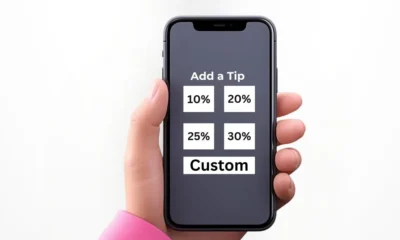GENERAL
What to Do When You’re Locked Out of Your Home or Car?

Getting locked out of a home or car is a frustrating and often stressful situation that can happen to anyone. Whether the keys are lost or left inside, or the lock is malfunctioning, finding a way back in quickly and safely is a priority. Many people panic when faced with a lockout, but there are several ways to handle the situation without causing damage to the lock or the property. Taking the proper steps can help regain access efficiently while avoiding unnecessary expenses or risks. Before attempting to break a window or force a lock open, it is essential to explore safer alternatives. We will explore different ways to handle home and car lockouts, ensuring the situation is resolved with minimal inconvenience while maintaining security.
Different ways to handle home and car lockouts
1. Checking for Alternative Entry Points Before Taking Further Action
Before assuming a lockout is unavoidable, it is always worth checking for alternative ways to get inside. For a home lockout, checking if a back door, side entrance, or window is open might provide an easy way to regain access without causing damage. Some doors may not have been appropriately locked, especially if someone left recently or the locking mechanism is not fully engaged. If a window is open, it is essential to ensure it is safe to climb through without injury. Checking other doors, the trunk, or even a partially open window might provide a solution for car lockouts. In some cases, newer vehicles have keyless entry systems that allow access through a mobile app, which can quickly unlock the car without needing a physical key. Exploring all possible entry points first can help resolve the issue without additional hassle or cost.
2. Calling Someone Who May Have a Spare Key
If there is no easy way to enter, the next logical step is to check if someone has a spare key. Many people give a trusted friend, family member, or neighbor a spare key for such situations. Calling them to bring the key can save time and avoid needing professional help. If the lockout occurs at an inconvenient hour, a nearby friend or relative may still be able to help by providing a temporary place to stay until access is regained. Some insurance providers or vehicle manufacturers offer remote unlocking services for car lockouts, which can be helpful if the car has such features. Other solutions must be considered if a spare key is unavailable, but checking this option first can provide a quick and easy resolution without any additional effort.
3. Avoiding Damage by Not Forcing Entry
A common mistake people make when locked out is attempting to force entry, which often results in more damage and higher costs than necessary. Kicking down a door, breaking a window, or using makeshift tools to pick a lock can lead to expensive repairs. These methods also compromise security by weakening the lock or door structure, making it easier for intruders to break in later. For cars, using coat hangers or similar tools to unlock a door can damage the locking mechanism or trigger the vehicle’s security system, making the situation worse. Instead of resorting to force, remaining calm and considering safer options is better. If there is no immediate way to get in without causing damage, seeking assistance from a locksmith or roadside assistance service is a more reliable and cost-effective approach.
4. Contacting a Locksmith for Professional Help
If no other options are available, contacting a locksmith is the most effective way to regain access to a locked home or car. Locksmiths are trained to handle lockouts efficiently without damaging the lock or door. Many locksmiths offer emergency services and can arrive quickly to resolve the situation. They use professional tools to pick locks, bypass security features, or reprogram keyless entry systems if necessary. For car lockouts, a locksmith can unlock the vehicle without triggering the alarm or causing harm to the locking system. If the key is lost or broken, they may also be able to create a replacement on-site. While there may be a cost involved, using a locksmith in London is often the safest and most reliable option for getting back inside without unnecessary damage or risk.
5. Taking Preventative Measures to Avoid Future Lockouts
Once access is regained, preventing future lockouts can save time and frustration. A straightforward precaution is keeping a spare key in a secure but accessible location, such as with a trusted friend or in a key lockbox. For homes, installing a smart lock with keyless entry can eliminate the risk of losing keys altogether. Many modern locks allow access through a keypad or smartphone app, providing backup entry options if the keys are misplaced. For cars, carrying a spare key in a wallet or purse or using a key fob with remote unlocking features can reduce the likelihood of a lockout. Being mindful of key placement and double-checking before closing doors can also help prevent these situations. Implementing these measures can significantly reduce the chances of experiencing another lockout.
6. Seeking Assistance from Roadside Services for Car Lockouts
Many auto insurance companies and roadside assistance programs offer lockout services as part of their coverage. If locked out of a car, contacting roadside assistance can be an alternative to hiring a locksmith. These services often include unlocking the vehicle, retrieving keys from inside, or even towing the car if necessary. Some car manufacturers provide emergency unlocking services for newer models, which can be activated through a customer service hotline or a mobile app. Roadside assistance can be a convenient and cost-effective way to handle car lockouts, especially if it is already included in an existing coverage plan. Checking with the insurance provider or membership service in advance can help determine whether this option is available when needed.
Being locked out of a home or car is an inconvenient and sometimes stressful experience, but there are multiple ways to resolve the situation safely. Checking for alternative entry points, calling someone with a spare key, and avoiding forced entry can help regain access without unnecessary damage. If those options are unavailable, contacting a locksmith or roadside assistance service provides a reliable solution. Preventative measures such as keeping a spare key, installing smart locks, or using remote unlocking features can help avoid future lockouts. Knowing the proper steps to take ensures that a lockout is handled quickly and efficiently, minimizing inconvenience while maintaining security.
-

 BIOGRAPHY7 months ago
BIOGRAPHY7 months agoBehind the Scenes with Sandra Orlow: An Exclusive Interview
-

 HOME1 year ago
HOME1 year agoDiscovering Insights: A Deep Dive into the //vital-mag.net blog
-

 HOME1 year ago
HOME1 year agoSifangds in Action: Real-Life Applications and Success Stories
-

 BIOGRAPHY1 year ago
BIOGRAPHY1 year agoThe Woman Behind the Comedian: Meet Andrew Santino Wife




























